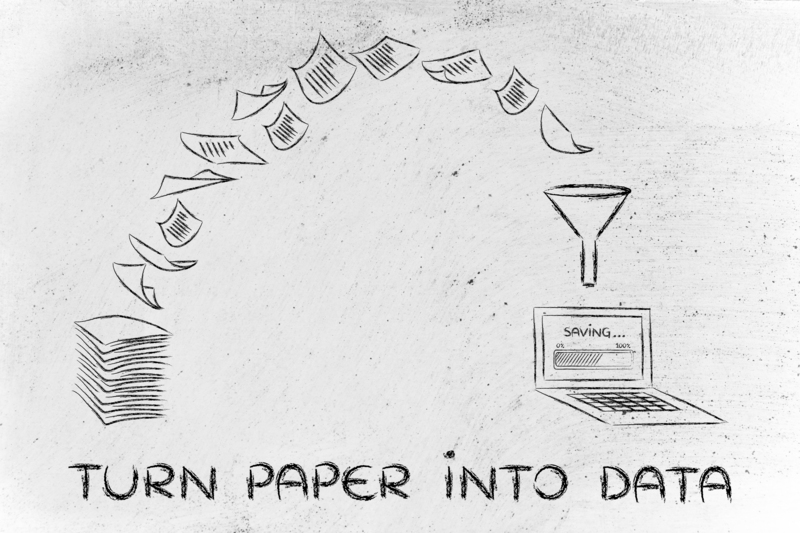Your Path to a Plastic-Light Lifestyle
Plastic pollution is one of the most urgent environmental challenges of our time. From the depths of the ocean to the food we eat, plastic has found its way into every corner of our lives. However, with increasing awareness and innovation, a plastic-light lifestyle is not just possible--it's essential. This comprehensive guide will walk you through practical steps for minimizing your plastic footprint, adopting sustainable habits, and making conscious, eco-friendly choices every day.
Why Choose a Plastic-Light Lifestyle?
A plastic-light lifestyle means actively reducing your reliance on plastic products, especially single-use plastics. This shift isn't only about saving the planet--it's about protecting our health, conserving resources, and leaving a better world for future generations.
- Protecting the environment: Reducing plastic use curbs pollution in landfills, waterways, and oceans.
- Supporting wildlife: Less plastic means fewer animals harmed by ingestion or entanglement.
- Health benefits: Many plastics release harmful chemicals such as BPA and phthalates that can leach into food and water.
- Paving the way for innovation: The growing demand for plastic alternatives encourages eco-friendly product development.

Understanding the Plastic Problem
Plastic doesn't biodegrade; it breaks down into microplastics that persist in the environment for centuries. Globally, almost 300 million tons of plastic are produced each year, and about half is designed for single-use. The journey toward a plastic-light life begins with understanding the scale and sources of the problem:
- Single-use plastics: Bags, straws, bottles, and packaging dominate landfills and marine debris.
- Hidden plastics: Microbeads in cosmetics and fibers in synthetic clothing contribute to microplastic pollution.
- Waste management issues: Only 9% of all plastic waste ever produced has been recycled.
The Impact of Plastic on Your Health
Plastic chemicals can migrate into food and water, especially when containers are heated or used for extended periods. These substances have been linked to hormone disruption, fertility problems, and certain cancers. A plastic-reduced lifestyle reduces your exposure to these risks.
Simple Steps for a Plastic-Light Lifestyle
Embarking on your plastic-light journey doesn't mean a radical and sudden overhaul. Instead, it's about making incremental, manageable changes that add up over time.
1. Conduct a Plastic Audit at Home
Start by examining your daily routines. Which items are plastic-heavy and which can be replaced? Make a list of the top plastic offenders in your home, from food packaging to bathroom products.
2. Embrace Reusable Alternatives
- Shopping bags: Switch to cloth, jute, or canvas bags.
- Water bottles: Invest in a stainless steel or glass bottle.
- Straws and cutlery: Carry your own metal or bamboo straws and utensils.
- Coffee cups: Choose insulated, reusable cups over take-away plastics.
Small swaps like these can significantly reduce your daily plastic waste.
3. Mindful Food Choices
- Bulk buying: Shop at stores that allow you to use your own containers for grains, nuts, and spices.
- Fresh produce: Choose loose fruits and vegetables instead of pre-packaged ones.
- Homemade meals: Reduce reliance on processed, packaged foods.
4. Smart Shopping Habits
Look for products with minimal or compostable packaging. Support brands that prioritize sustainability and reduce plastic packaging in their supply chain.
5. Rethink Personal Care Products
- Bamboo toothbrushes: Replace plastic brushes with bamboo options.
- Bar soap and shampoo: Opt for package-free bars over bottled liquids.
- Refill stations: Use refill stations for products like lotion, detergent, and cleaning supplies.
Going Beyond Your Home: Plastic-Light on the Go
Living a low-plastic lifestyle isn't restricted to your household. Here's how to make sustainable choices on the move:
- Zero-waste travel kits: Pack travel-sized containers, utensils, and a reusable shopping bag.
- Takeout and delivery: Request restaurants to skip plastic cutlery or containers. Carry your own food containers for leftovers.
- Events and parties: Avoid single-use decorations and tableware. Choose compostable or reusable options.
Plastic-Light at Work
- Reusable lunchboxes: Use stainless steel or glass containers for meals.
- Water and coffee: Keep a designated mug and water bottle at your workplace.
- Office supplies: Choose refillable pens and plastic-free paper clips.
Advocating for a Plastic-Light Community
It becomes easier to stick to a plastic-lite lifestyle when your community supports you. Spread awareness and advocate for systemic changes that foster more sustainable living.
- Educate friends and family: Share your journey and helpful tips.
- Support local campaigns: Back initiatives for bans on single-use plastics.
- Collaborate with schools: Encourage plastic reduction in cafeterias and events.
Shop Local and Support Plastic-Free Businesses
Frequent local farmers' markets, co-ops, and shops that embrace low-waste principles. Many small businesses are leading the charge in cutting down on single-use plastic, offering refills and plastic-free alternatives. By supporting them, you also help spread sustainable practices.
Common Myths and Challenges
Myth 1: Living Plastic-Free Is Too Expensive
Contrary to popular belief, many plastic-light switches are cost-effective over time. While reusable items might cost more upfront, they quickly pay for themselves by reducing repeated purchases of single-use products.
Myth 2: My Effort Won't Make a Difference
Individual actions matter. When millions of people make small changes, the cumulative effect is massive--encouraging industry and policy shifts on a larger scale.
Myth 3: It's Inconvenient
It can feel inconvenient at first, but new habits become second nature with time. Prioritize what fits your lifestyle and build from there.
Innovative Alternatives for a Plastic-Light Future
New materials and product designs are advancing every year. Keep an eye out for:
- Bioplastics: Made from renewable resources such as cornstarch or sugarcane, these break down more readily than conventional plastics.
- Edible packaging: Wrappers made from seaweed, rice, or potato starch are emerging as eco-friendly food packaging.
- Plant fibers: Bags and containers from hemp, bamboo, and palm leaves offer sturdy, biodegradable options.
- Refill models: Stores and brands enabling you to refill your own containers, slashing packaging waste.
Technology and Plastic Waste Solutions
Advancements in waste sorting, plastic recycling, and upcycling are making it easier to manage existing plastic waste. While the focus remains on reducing plastic use, these innovations play a vital support role.
Plastic-Light Lifestyle in Different Areas of Life
Kitchen
- Switch to glass storage jars, beeswax wraps, and metal food tins.
- Compost kitchen waste to reduce reliance on plastic trash bags.
- Buy in bulk using your own containers.
Bathroom
- Pick soap bars, wooden combs, and plastic-free razors.
- Skip plastic-packaged skincare and look for natural, package-free choices.
Laundry
- Use laundry soap nuts or eco-friendly powder in cardboard packaging.
- Add a microfiber filter bag to your washing loads to capture microplastics shed from synthetic clothing.
Children and Babies
- Opt for wooden toys, cloth diapers, and glass baby bottles.
- Make your own baby food to avoid single-use pouches and containers.
Pets
- Choose metal, ceramic, or glass bowls.
- Avoid synthetic toys; go for natural rubber or rope alternatives.
Building Your Own Plastic-Light Toolkit
Prepare a grab-and-go kit to help maintain your commitment outside the home. Essentials include:
- Reusable water bottle and coffee cup
- Cloth shopping bags and produce bags
- Compact cutlery set and straw
- Small containers for leftovers
Keep your kit in your everyday bag, car, or at the office--being prepared is key!
Monitoring Your Progress
Change is a journey, not a destination. Celebrate each step you take towards a plastic-minimal lifestyle. Track your plastic consumption for a week or a month and note the differences as you adopt new habits. Encourage your household or workplace to do the same, and consider joining online communities dedicated to sustainable living for support and inspiration.

Frequently Asked Questions (FAQs)
Can I go completely plastic-free?
While a 100% plastic-free lifestyle can be difficult in today's world, embracing a plastic-light approach is both practical and highly effective. Focus on progress--not perfection--and celebrate every improvement.
Are plastic alternatives always better for the environment?
Many alternatives, like glass or metal, have a higher initial production footprint but are much more durable and recyclable in the long run. Always consider the product's lifecycle and reusability.
How can I encourage others to reduce their plastic use?
Lead by example and share your knowledge. Host workshops, share tips on social media, and advocate for policy changes in your community.
Your Impact: Every Step Counts
The journey toward a plastic-light lifestyle is about making informed, conscious choices. Every reusable bag, every swapped product, and every responsible purchase is a step towards healthier ecosystems and a more sustainable future. By minimizing your plastic footprint, you're contributing to a global movement and inspiring others to follow your lead.
Begin your plastic-light journey today--and see how small changes can make a big difference for our planet and future generations.
Useful Resources: